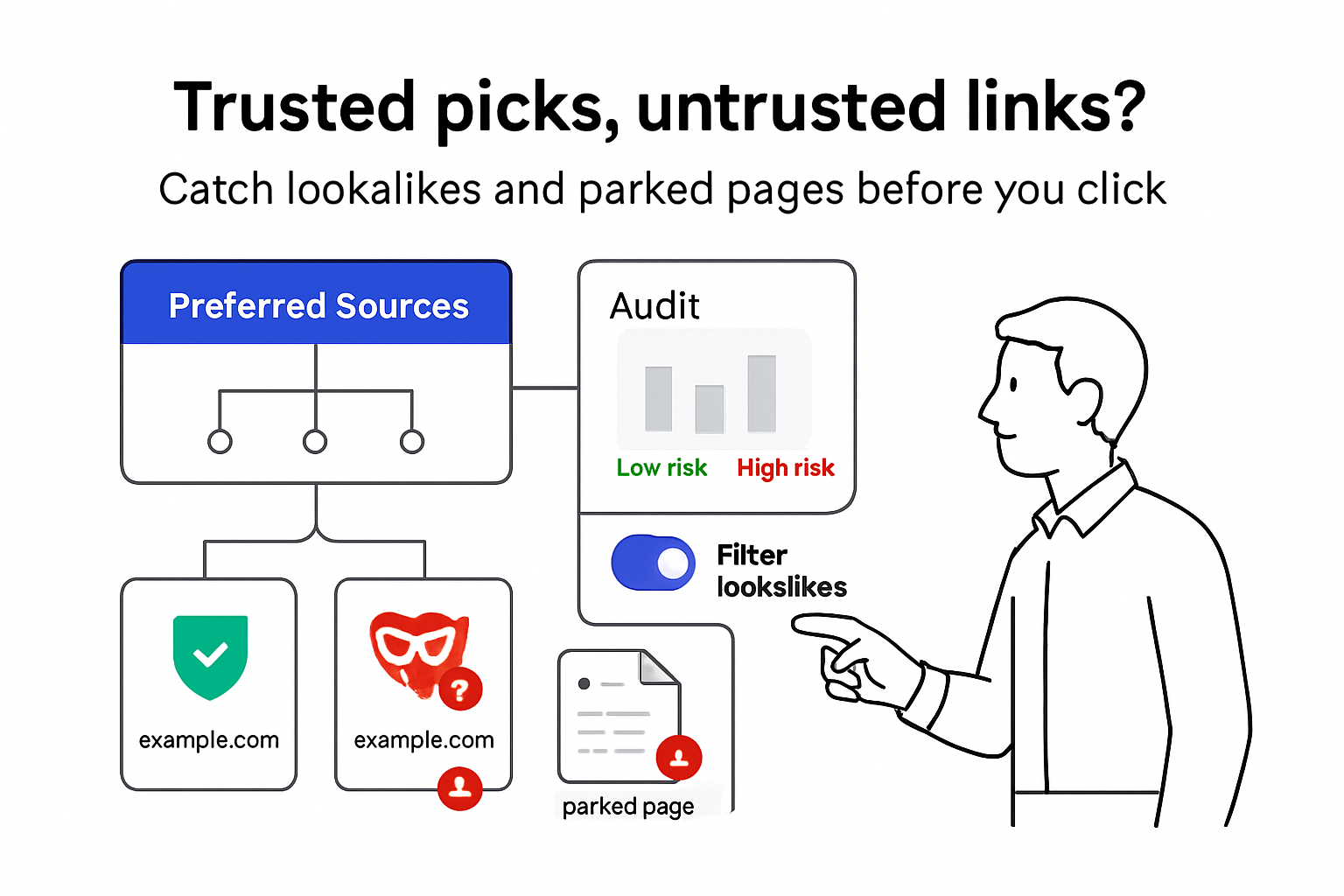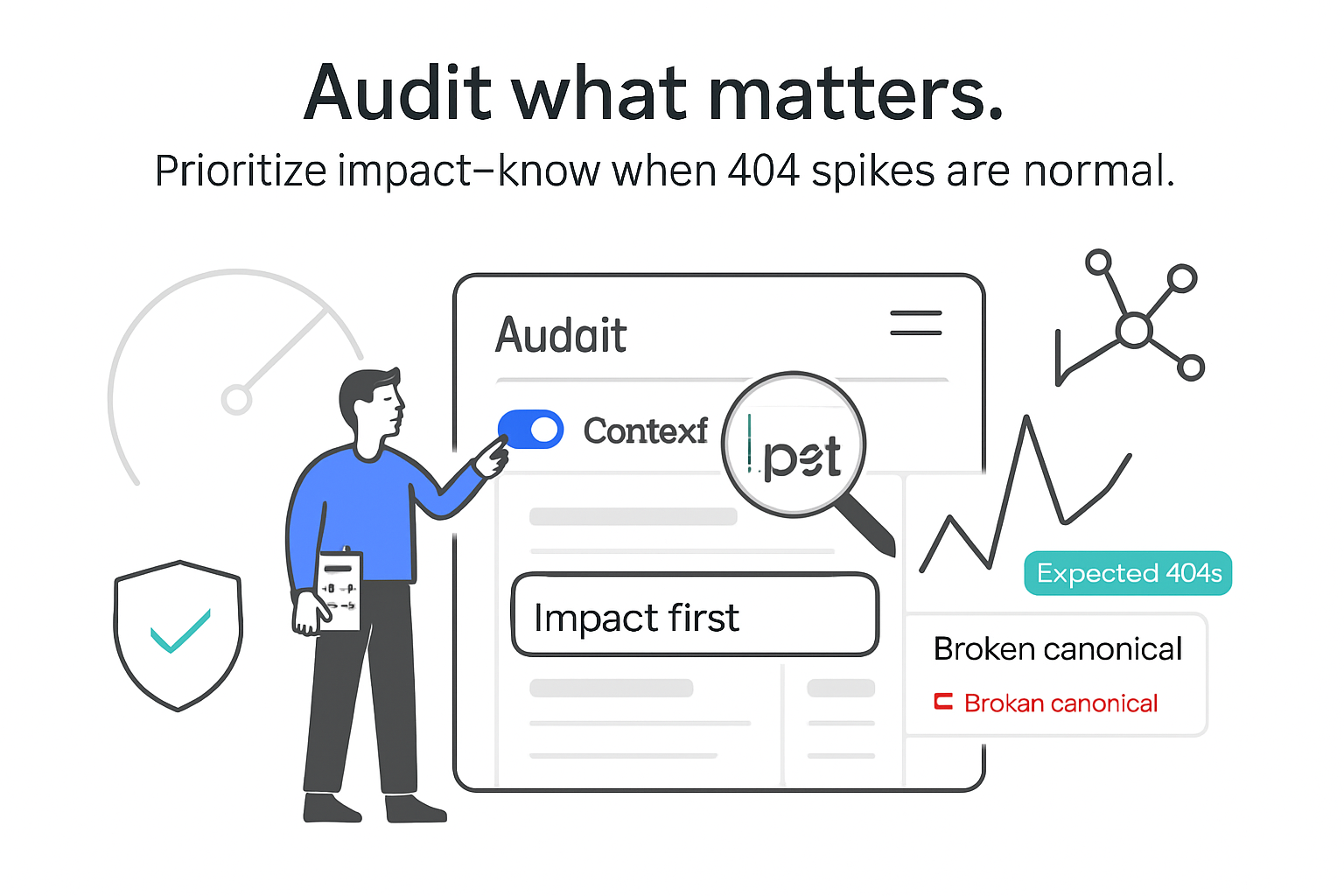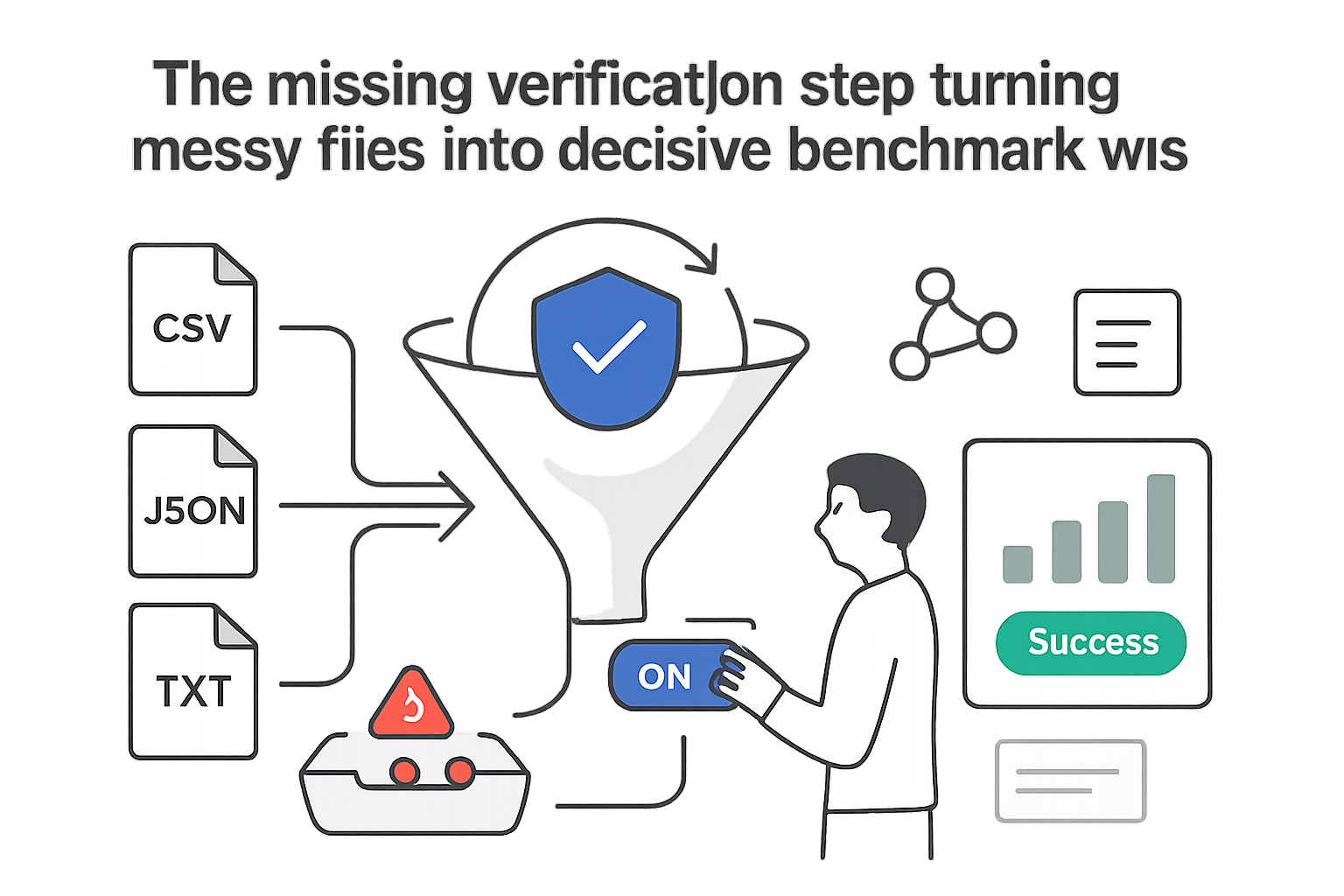Search Engine Journal reported on November 7, 2025 that Google's Preferred Sources tool surfaced copycat and parked domains in its source suggestions. Observations were made within the tool on google.com, with lookalike domains appearing alongside established publishers. Google has not issued a statement.

What was found
Search Engine Journal staff writer Roger Montti documented multiple instances of questionable sources appearing in the Preferred Sources tool, which lets users elevate outlets in Top Stories.
- Screenshots show lookalike domains using country-code second-level domains like .com.in and .net.in that resemble well-known publishers.
- One example mimics The New York Times with an Indian country-code suffix and appears in the tool's list of selectable sources.
- Another example shows a HuffPost lookalike using an Indian country-code extension when searching for "HuffPost."
- A parked domain using a .com.in address appears alongside an established SEO tool's official domain.
- An unrelated subdomain under Automattic surfaces as a suggested source.
- Site query screenshots indicate only a homepage indexed for some listed sites.
- A domain resembling Search Engine Journal, using an Indian country-code structure, appears among suggested sources.
The report is based on observations inside Google's interface and includes multiple screenshots. It does not include an official Google comment.
Why it matters
The Preferred Sources setting is designed to personalize which outlets appear more often in Top Stories. If lookalike or parked domains are suggested as sources, users could mistakenly boost low-quality or impersonating sites, which risks misleading readers and diluting trusted publisher visibility.
Background
Top Stories aggregates recent news coverage from multiple outlets within Google Search results. The Preferred Sources tool personalizes that experience by letting users choose outlets to prioritize.
Lookalike domain registration involves acquiring names similar to established brands, often by using alternative top-level or country-code domains. Such domains are sometimes used for impersonation, ad arbitrage, or other low-value tactics.
Open questions
- Whether the surfaced domains reflect a bug, policy gap, or expected behavior.
- How Google curates, verifies, and updates the list of suggested sources.
- The scope of impact across regions and accounts.
- When a fix or clarification might arrive.
What marketers can do now
- Check the Preferred Sources tool to confirm which sources are suggested for your searches and brand.
- Verify source domains before selecting them, especially when names resemble well-known publishers.
- Monitor for lookalike registrations of your brand and consider defensive domain measures.
- Watch Top Stories performance and referral quality for unusual patterns.








.svg)